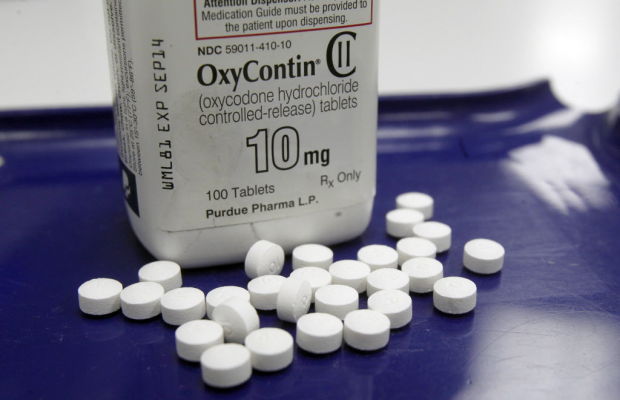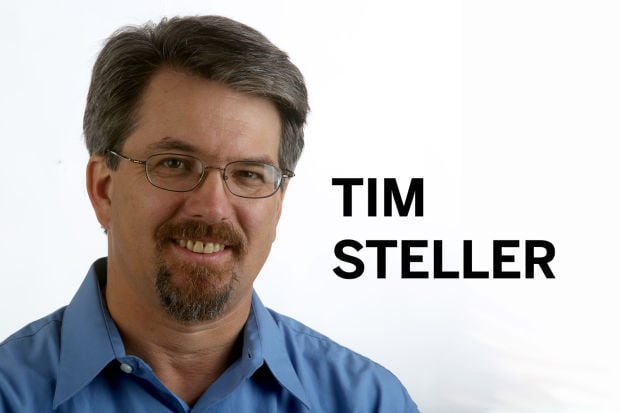Kicked out of a Tucson methadone clinic, I walked to a bus stop just off the property, looking for my own type of score — an interview.
The first man I approached, Ezekiel M. Alvarez, was eager to talk about his addiction to opiates.
His mom, a cancer patient, gave him his first opiate pain pill for a headache, he said. It was 1998.
“I ended up taking them for 10 years,” he said, describing a decade of black-market buys. “I’d take at least 200 a month.”
Now Alvarez is on methadone, like thousands of others in Southern Arizona and millions across the country. The corporate irresponsibility that drove today’s addiction surge is giving way to a new wave — more businesses and nonprofits helping addicts kick their habits, and in some cases making money at it.
Alvarez is a patient at COPE Community Services’ clinic at 5401 E. Fifth St., the largest methadone clinic in the state, according to COPE’s medical director, Dr. Robin Ross.
The clinic’s director told me I couldn’t stay when I visited unannounced last week, but he was nice enough about it, explaining about patient privacy, bad publicity and such. Patients were clustered inside and out, moving through to get their doses and get on with their days.
This director was new — his predecessor, Armando Moreno, left a couple of months ago to join Connections AZ, the psychiatric group that runs the local Crisis Response Center. Moreno and another COPE employee, Dr. Leonard Ditmanson, are helping Connections AZ move forward with a plan to open perhaps three additional methadone clinics in the Tucson area. The need is that great.
“There are not enough clinics, basically because of the licensing,” Ross explained. “It’s a regulatory hassle.”
Doctors can only prescribe methadone and similar opiates to a limited number of patients at any given time. The 100-patient-per-doctor limit was recently raised to 275. Still, the fact that there are any limits drives doctors like Ditmanson crazy. He believe in the power of drugs like buprenorphine, another opiate used like methadone, to help addicts.
“Why is there a limit to prescribing such a safe drug?” he asked.
But for the layman like me, such objections raise worries of their own. We got into this mess, of course, by lowering our inhibitions about the dangers of opiates.
I recently read Sam Quinones’ book, “Dreamland,” about the American opiate epidemic. He skillfully brings together several themes to show how we got here: blue-collar economic decline, the spread of Mexican black-tar heroin and the industry-pushed spike in the wide use of opiates as pain relievers.
It isn’t that they don’t work. They can — and many people with pain problems get steady relief from them. It’s that they were prescribed too liberally from the late 1990s until the last few years.
Purdue Pharma pleaded guilty in 2007 to charges that it had misled regulators and doctors about how big a danger of addiction its top product, OxyContin, posed. By then, it was far too late. Doctors across the country had taken to prescribing opiates willy-nilly.
“This era of medicine is probably the biggest mistake in the history of medicine,” Ditmanson said. “From my perspective, the pharmaceutical industry that distributes opioids is more culpable than the tobacco industry for knowing how dangerous their product is and developing market distribution.”
Alvarez, 40, also puts some blame on the medical profession for his predicament.
For taking that first pill, “I blame myself,” he said. “After that, I blame the doctors for selling them to people.”
Tucson has had a significant opiate problem going back five generations, Ditmanson noted, to when Chinese laborers building the railroad were using opium and laudanum. But the current problem has overspilled all previous limits of class, race, gender and age.
By the time regulators finally caught up to it and began putting some limits on opiate prescriptions, the tiger was loose. Those who had become addicted to pills started to have a hard time getting them, via prescriptions or on the black market, and instead turned to heroin.
One silver lining to this cloud has been that there are so many people addicted to opiates now, people seem more willing to talk about it and explain.
Another Tucson man I talked to, who requested not to have his name published, experimented from an early age with various drugs. The 41-year-old said he didn’t really get addicted until 2002, when a doctor began prescribing him 400 30-mg oxycodone pills for severe and persistent headaches. Then he was off on a years-long addictive trip.
He crashed headlong into the severity of the problem when he moved to Colorado and couldn’t persuade anyone to give him a prescription like the one he’d had here. He turned to heroin as a substitute, he said, but not out of a craving to get high.
“It’s not about getting high. It’s about not getting sick,” he said.
Like Alvarez, he turned to a Tucson methadone clinic for help. The benefit of these places: The good ones bring you in fast, evaluate you broadly and provide services along with the medicine that keeps you from getting sick but also doesn’t make you high.
The downside: It can be really, really, really hard to get off the methadone, buprenorphine or Suboxone you are prescribed.
My anonymous user once weaned himself off the Suboxone, which gave him bad side effects, by using heroin. Now he’s using methadone. It allows him to work and lead a productive life, though he’s of course still doing opiates — the methadone itself.
Alvarez told me he’s gone from 140 mg of methadone per day down to 17 mg. But he’s not sure he’ll ever stop taking it.
“I’ve heard of people getting off of it,” he said. “I know it’s hard.”
Ross, the COPE medical director, told me the new effort in methadone clinics is to use newer drugs to help people get off opiates altogether.
”You get down to a certain dose,” she said, and the addiction “is more psychological, more in their head than it is in their body.”
Helping more patients get over that hurdle is the next big step for the clinics.
But the suspicion persists that the clinics and the manufacturers of methadone and related drugs enjoy having a steady customer base.
That’s one of the things that drives a couple I met in Sam Hughes on Friday. For years, they’ve sold an herbal supplement called kratom that some addicts have used to kick opiates for good. If they’re not home, outside their door, you can slip $30 cash into a vending machine and out comes a packet.
But that probably won’t last long. The Drug Enforcement Administration has announced it plans to list kratom, which is derived from a Southeast Asian tree, as a controlled substance by the end of the month.
So for now, it seems, the main way to get off black-market opiates remains getting on a different kind of opiates. From that, you can bet someone is going to make a lot of money.







